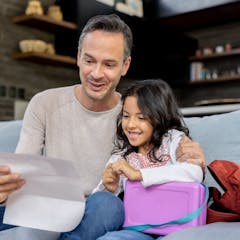
Articles on Back to school
Displaying 1 - 20 of 93 articles

A new community risk assessment tool allows post-secondary institutions to make evidence-based decisions about their policies and procedures.

The ‘fresh start effect’ explains why the beginning of a new school year often leads to a boost in motivation – even if you aren’t a student.

Local governments have far too often been let off the hook for approaches that discreetly limit where students may live.

A leadership program for Black youth sees students participate in research related to their communities and education to propose solutions to issues that affect their lives.

Access to schooling for four-year-olds is inconsistent across Canada. Families need to know children are immersed in high-quality early learning, and they shouldn’t be exhausted searching for it.

Let them know that you understand and believe them.

In many cases, shyness is not a cause for concern and may have associated benefits. Parents and caregivers can learn strategies to support shy children in making transitions.

Traditional report cards sent home every few months are fine for most students. But for kids with behavioral issues, a daily report card can be a better option.

Adapting post-secondary education through technological, social and cultural shifts depends on paying attention to healthy connection, social justice and amplifying what’s now going well.

Parents need to directly hear from teachers and administrators via open houses or parent advisory councils to lift the fog of confusion and concern surrounding this change.

The 2023 Global Education Monitoring Report proposed restrictions on the use of technology in the classroom.

Many organisations use ‘after action reviews’ to debrief after an event. A modified version could help parents work through the news their child is unhappy with an element of their school life.

Many kids are nervous about starting a new school year. But some children will experience a level of anxiety about school that causes them significant problems.

There is a lot of pressure on the transition to ‘big school’. For parents, this raises the question of how best we can prepare our kids and ourselves for this time.

These tips can help children who are feeling anxious about the transition to school or going back after the holidays.

People, policies, practice and place all matter in publicly funded, school-based children’s early learning programs.

During times of stress and change, people are often advised to practice self-care by looking after themselves, yet what about the benefits of showing kindness to others?

To understand how tuition waivers and associated supports can help former youth in care complete post-secondary education and positively affect their health, evidence-based practices are needed.

Different professors teach differently. If you’re a student with choices in a program, it makes sense to find out what you’re getting.

Parents and caregivers can support teens with the transition to high school by taking the time to connect and talk, whenever and however you can.
